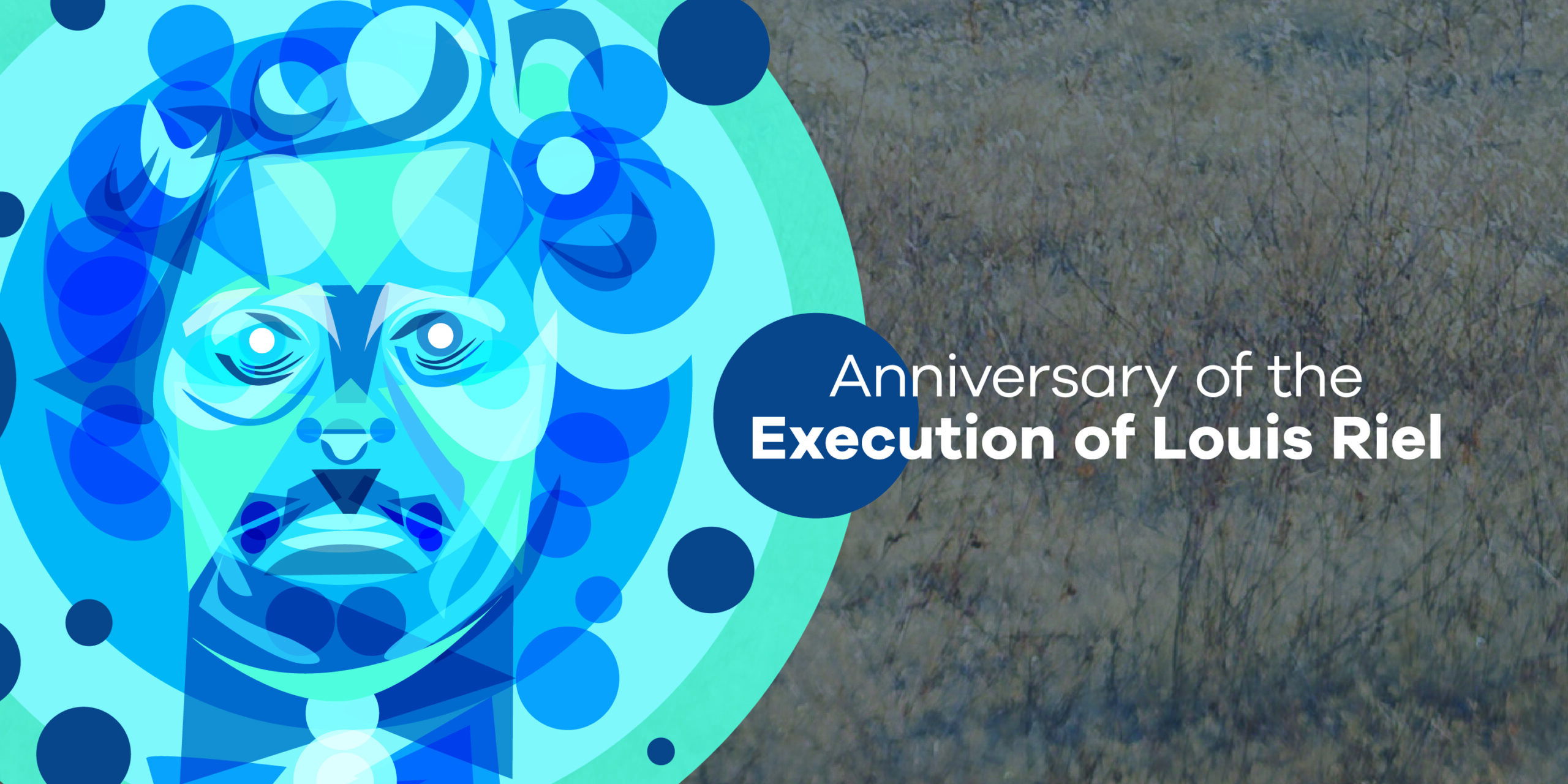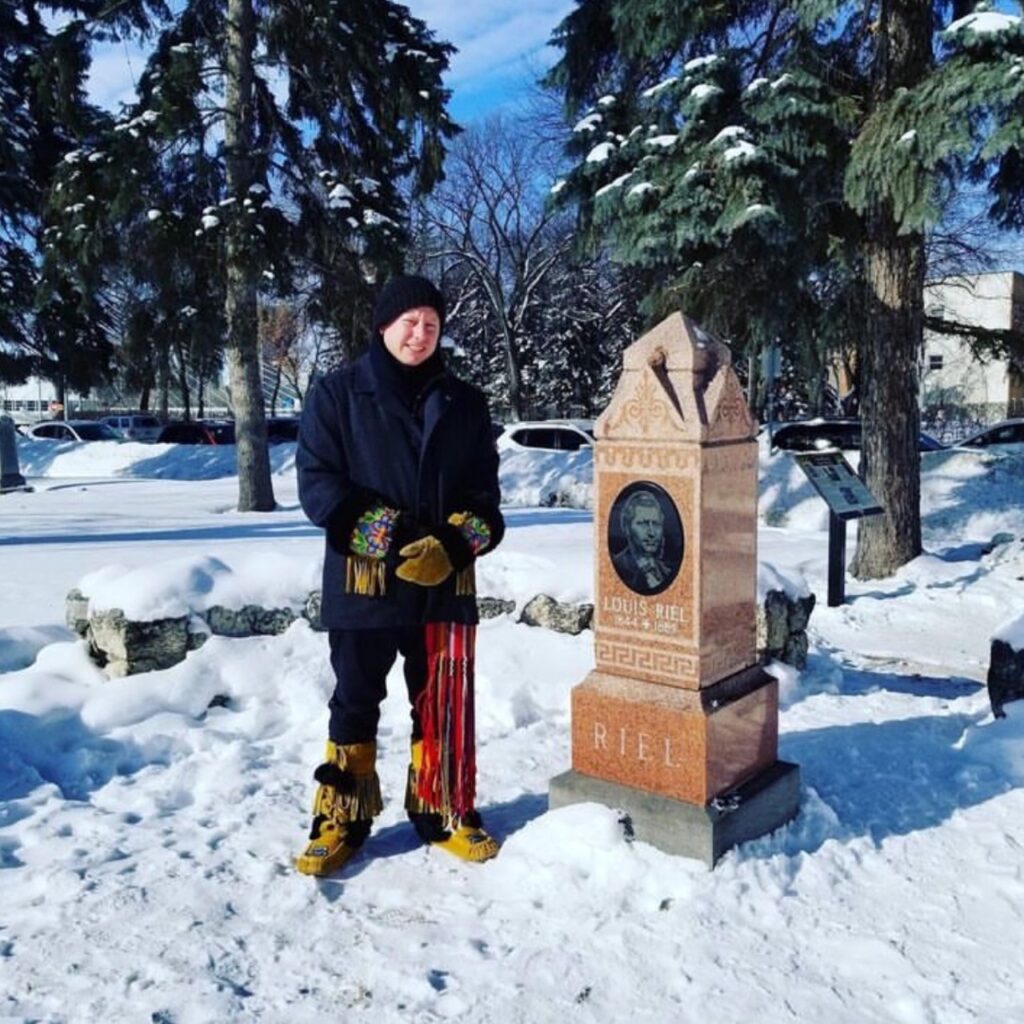News
Revolutionary Revealed

Indigenous Graphic Design / November 16th, 2022
November 16 marks the anniversary of Louis Riel’s execution in 1885. In that year, Riel led Métis people in the Northwest Resistance, standing up for Métis rights and way of life. The Resistance was defeated at the siege of Batoche, and the Canadian government captured Riel. He was put on trial, convicted of treason and executed.
Ahead of this anniversary, we sat down with Vincent Design’s founder and creative director to learn more about Riel’s legacy and the lessons Shaun draws from Riel on life and leadership.
“We must cherish our inheritance. We must preserve our nationality for the youth of our future. The story should be written down to pass on.”
– Louis Riel
Q: What is your earliest recollection of learning about Riel?
A: I don’t remember ever being taught about Louis Riel at school, even in High School. I do remember my mom taking me to see the statue of Riel at the Manitoba Legislature when I was a kid. [This was the controversial abstract statue by sculptor Marcien Lemay, originally unveiled in 1973 on the south grounds of the Legislative Building and later moved to St. Boniface College, enclosed in a structure designed by architect Étienne Gaboury.] I thought it was a scary statue. I’ll never forget it.
Q: Why do you think it was important for your mom to take you to see it?
A: My mom was proud of who she was. It might have taken some time, but near the end of her life, she was all in. She was very proud of her roots, through everything she was faced with in her life.
Q: Can you share a little more about her?
A: At 15, she hopped on a bus from her home in St. Laurent to Winnipeg, if you can imagine that. As an Indigenous woman, she faced racism and discrimination. This was also during the 60s, and at that time places like Rooster Town were still around. Discrimination and negative perceptions about Indigenous people were all in the papers. During this time, Riel was considered a traitor to many, and I’m sure this had an effect on Métis people. I know it did for us. My Grandfather helped in our resilience. He was a chair for a Métis Local in Winnipeg. He was a strong advocate for Métis rights and at one time was someone who could approve peoples application MMF cards. Back when it was the Winnipeg Association. I know my Mom was self-conscious about her language. Sadly it was too late by the time she came around, and we lost it.

Q: Did you feel that was something you had to hide?
A: Not really. As a white-passing Michif, I did have it somewhat easy. I think the hardest thing was to convince my friends that I was “native.” It’s crazy to think about that. In the country, however, in St. Laurent, you just exist. There is a saying from Angus Spence, past president of the Manitoba Métis Federation, “we know who we are.” I often wondered about his words. At my age, and with the experiences I’ve had, I completely understand that now. He was correct. There’s no need to explain who you are, you just know. My mom wanted to make sure we will always be connected to St. Laurent. A Métis elder told me something one day, she said “this ground recognizes your feet. The land knows when you’re here. It now does so for your children as well”.
Q: When did you begin to understand Riel’s role for the Métis people and what was that learning journey like for you?
A: It wasn’t until the early 2000s that I began a deeper research into his life. It went along with starting Vincent Design. What I learned about Riel, and continue to learn, has helped me in the work that I do now. Leadership is about caring and acknowledging EVERYONE you represent, including those who may not agree with you.
“Yes, I have done my duty. During my life, I have aimed at practical results. I hope that after my death, my spirit will bring practical results. All that I have done and risked…rested certainly on the conviction that I was called upon to do something for my country.”
– Louis Riel
Q: What stood out to you about the roles Riel held?
A: He was educated. He was someone people turned to and he understood his responsibility to them. I don’t feel he was in it for personal gain. He saw it as his duty to serve. It was never about him, but the people he represented. Leadership vacuums happen, and I think he felt the importance to lead.
Q: What are your thoughts on the changing perception of Riel’s role over time?
A: It’s changing. And for the better. You’ll always have those who still call him a traitor, and that’s fine. Those people are dwindling. We have enough documented history now to really get a solid idea of who he was. As for the past, we can’t rewrite history. Some have introduced the idea of pardoning Riel. I don’t think we should. We are who we are now because of what happened to him. The fight for justice for Métis people continues today, and his story is our inspiration.

Q: What qualities do you think Riel had to equip him for his role as the leader of the Métis people?
A: I don’t think he knew exactly what he needed. He was educated, knew the system, and came from a well-respected family. I think the traits he needed during the conflicts and tense situations were learned as he went along. He did, however, fully understand the situation Métis were in throughout the country. Discrimination, hatred, and all of that. I think this fueled him.
Q: What singular characteristic do you believe Riel had that you wish you had?
A: The ability to make hard decisions. Perhaps he didn’t have the luxury of time to think about some of them. Either way, I wish I could act on situations or decisions as he did.
Q: How should people honour Riel today? What will you be doing?
A: I drive by Riel’s grave every day and that is no exaggeration. I believe that visiting someplace real, such as Riel’s site, makes it more impactful. Across the street, at the former residence of Archbishop Alexandre Taché, there is a balcony where Riel stood. It’s incredible to me, seeing this, and imagining what he was thinking when he was watching troops retake the fort he had to abandon. Visiting locations where history occurred is effective. Also, reading graphic novels, such as Chester Brown’s Riel book and other comics is a great way for younger audiences to be introduced to this important history. Personally, I will be visiting the grave site, as well as trying to return to the many books that are on my reading list.

Visit the statues of Louis Riel, one at the Manitoba Legislature Grounds and the other at St. Boniface College:
Louis Riel Statue (200 Avenue de la Cathedrale, Winnipeg)
Louis Riel Statue (Assiniboine Avenue, Winnipeg)
Visit the resting place of Riel:
St. Boniface Cathedral Cemetery (Taché Avenue, Winnipeg)
Learn more about Riel and see artifacts related to his life and death:
Le Musée de Saint-Boniface Museum
